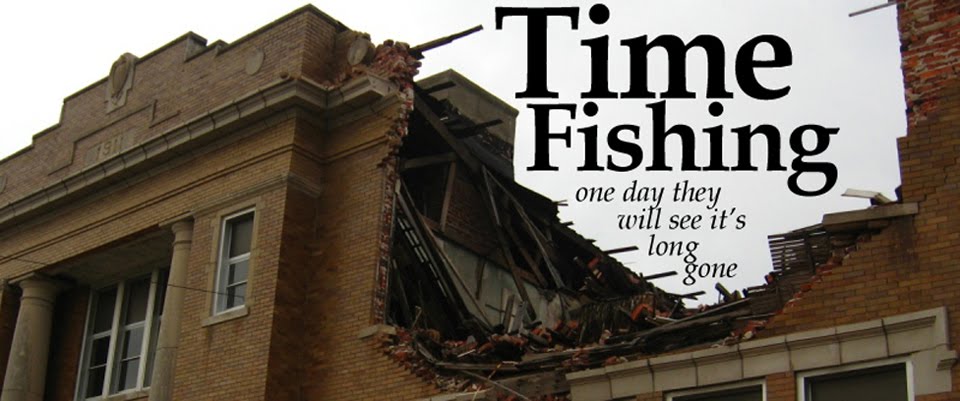
It's a little surprising that, considering the number of times I've been to my wife's hometown of Albion, Illinois, I've never blogged about it.

The town of around 2000 folks has a few factors in common with Searcy. It's the seat of a dry county. One of its official buildings is the oldest in the state. The courthouse square is vibrant.
Albion, however, has managed to keep track of its history more faithfully than Searcy has. For example, the square and quite a few of the nearby streets are still paved with brick! Not only is it brick, it's brick that was originally manufactured in this town (as you can tell by the first picture, above).

The courthouse is probably older than Searcy's, but as Illinois is older than Arkansas, that likely doesn't say that much for it. It's still quite an imposing centerpiece. The little blue children have something to do with preventing child abuse, and according to Jenna's father they pop up every year around this time.

Now here's something you don't see too often. Abreast of the courthouse is a building that, these days, would be totally inept for its purpose. It's the original jail. In this country, you can tell if a building is extremely old if the shutters are actually in use. Note that the four lower windows are shuttered closed. A more austere architectural style tends to point to a very old age as well.
In fact, Albion was settled right after the war of 1812 by some English folks. This is probably the origin of the name, since Albion is literally the oldest known title for the mother country. Of course in 1812 you could probably be shot for calling England anything other than "that island of oppressor dogs," so naturally the surrounding occupants of the future Edwards County were suspicious.
But, all turned out okay.

Attention to history has left Albion with a gorgeous collection of antique storefronts, many of which are still populated with businesses. Around the corner, a Subway is inside one of the old buildings. This warms my heart. Of course, there is a standalone McDonalds just across the street, but hey, you can't win 'em all. Unless you're Subway.

Whereas Searcy's courthouse is the oldest in the state, Albion's library gets that title. It's one of those great old libraries that has a distinct smell, and of course books with stamped cards that date back to when your parents were little.

Near the aforementioned Subway is one thing that saddens me just a little. You can see that some mundane steel paneling has covered up what used to be some neoclassical details on this old bank building. The Corinthian and rows of quoins on the sides are the only pieces of its history this bank has left to it. But I've seen a lot worse in Arkansas.

For the rest of the post, let's take a stroll down the bricked streets around the business district and check out a few of the old and beautiful houses.

A very individualistic building near the courthouse might have once been a residence; most recently it has been antique shop of sorts and is now for sale. The style holds together very tightly; I find the economy of space in this building pleasing. Someone want to buy it for me?

A beautiful Queen Anne home sits just one incongruous block away from a McDonalds. Take a look at the oddly ornate chimney nestled between the tower and the gable.

A huge double-porch mansion (in the 19th century Edwards County sense; most folks wouldn't consider this a mansion these days) is across the street from the Queen Anne house. Judging by the austere style and functional shutters, it's probably one of the oldest houses in town. It strikes me as similar to
this moldering ruin we spotted in Augusta. In fact, I understand the Albion house was in a state of ruin until just recently when a citizen began the process of restoration. And that's what sets towns like this apart from towns like Augusta.
And the last image of the day is...

Whoa! What the--? Is it a--or maybe a--huh? I've honestly never seen a house like this before. The gambreled roof is perched over what might be some kind of Italianate first floor, complete with dentals...but after that I'm lost. I kinda like it, though. It's nothing like any of the other houses on the street, or downtown, as far as I saw.
And that's Albion! It's really a great little town, and I promise my in-laws aren't breathing down my neck as I type this. There's a great deal of live and vibrancy that you miss in many of the small towns in rural Arkansas. Why is that, I wonder? I suppose I'll learn one day.
-Jonesy




















